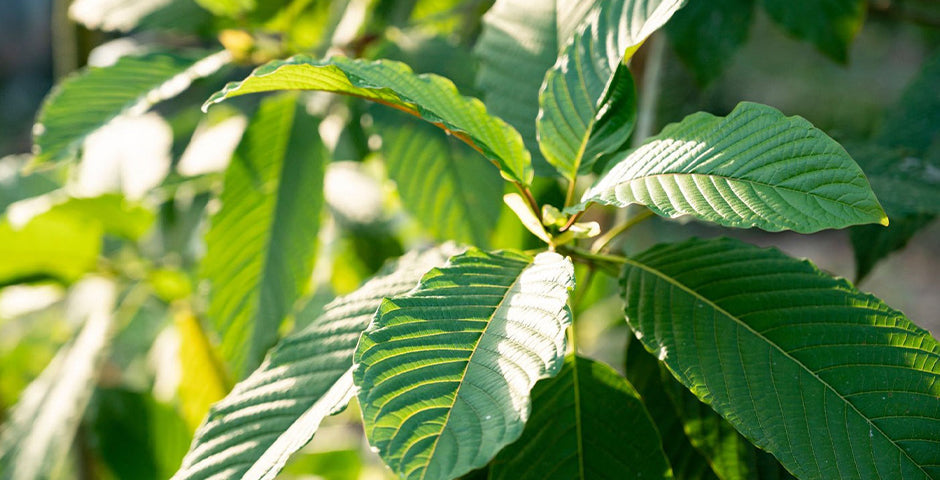Your Cart is Empty
Shipping is free on orders over €60!
Shipping is free on orders over €60!

Mitragyna Speciosa, also known as Kratom, is a tropical tree native to Southeast Asia. It has been valued for its psychoactive properties for centuries. It belongs to the coffee family (Rubiaceae) and depending on the time of harvest, red, white or green leaves are picked. Each color has its own and special properties.
The origin of Mitragyna speciosa is as interesting as the tree itself. It is found primarily in the humid, tropical regions of Thailand, Malaysia, Indonesia and Papua New Guinea. There the Kratom tree thrives in fertile soil. It prefers areas with high rainfall and high humidity.
These regions are more known for their picturesque beaches, but you can also find exotic vegetation. The valuable kratom plant, which has been used in traditional medicine for centuries due to its unique active ingredients, comes from this breathtaking environment.
The chemical composition of Mitragyna Speciosa is extremely complex and consists of more than 40 different alkaloids. Among all these compounds, mitragynine and 7-hydroxymitragynine particularly play a crucial role as they are responsible for the pharmacological effects of kratom .
These alkaloids bind closely to certain receptors in the brain and have both stimulating and calming properties - depending on the dosage and individual metabolism. However, research in this area is not yet complete.
Further research is needed to gain a better understanding of the effects of kratom.
Mitragyna Speciosa is an amazing plant capable of relieving pain and producing a stimulating effect. This is due to their alkaloids. These bind to the opioid receptors in the brain. What sets these compounds apart from traditional opioids is their lower affinity for these receptors.
This means they are less addictive. But that's not all: the alkaloids in Mitragyna Speciosa also stimulate the adrenoreceptors. This leads to increased adrenaline levels and has a stimulating effect on the body.
All these factors together make this plant a promising alternative for people who want to relieve pain and be fit at the same time.

In Southeast Asia, the use of Mitragyna Speciosa goes back a long way and was part of the regional culture. Here Kratom was traditionally chewed or prepared as a tea. The application was used by the locals in particular to combat symptoms of fatigue, improve work performance and relieve pain.
In Western countries, Kratom has become increasingly popular in the form of capsules, tablets or extracts due to its versatile effects. It has emerged as a natural alternative to traditional painkillers because many people say it has no side effects.
The effects of Mitragyna Speciosa can vary greatly depending on the dosage . While the effects of kratom can vary from person to person, some general effects can be observed.
It is important to note that the effects of kratom can vary from person to person and depend on other factors such as the strain, dosage, and individual tolerance. We recommend that you use kratom responsibly and educate yourself about the specific properties of the variant used.
| The leaves of the Mitragyna Speciosa tree (also known colloquially as the Kratom tree) are referred to as Kratom. All ingestion effects described on this website only serve to convey knowledge about the substance itself and are not part of the description of any product we offer! They describe and explain the former use in the countries of origin in Southeast Asia.
Kratom is not subject to German drug law and is not a food. All Kratom products we offer are not intended to be taken into the body and we expressly advise against taking them. They are expressly not intended for therapeutic purposes; they are not cosmetics or foodstuffs. Our kratom products are sold exclusively as a natural dye, foot soak, for scientific purposes and as visual aids. It is not intended for consumption. |